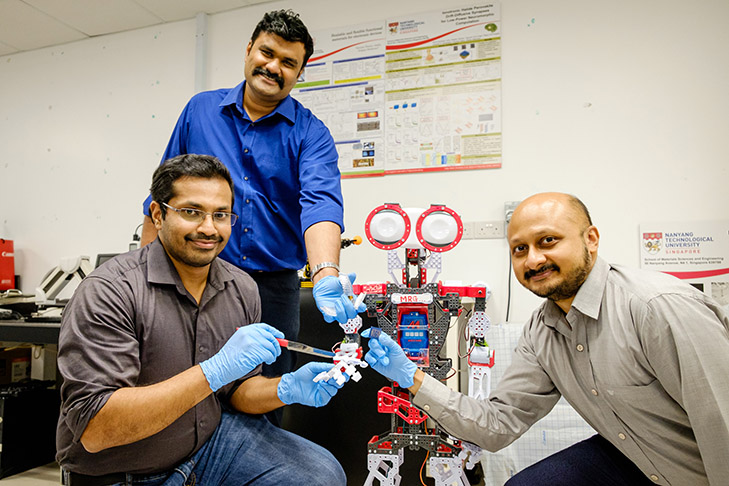Scientists from Singapore’s Nanyang Technological University (NTU) have developed a way for robots to have the artificial intelligence (AI) to recognise pain and to self-repair when damaged.
Using a brain-inspired approach, the system’s AI-enabled sensor nodes can process and respond to “pain” arising from pressure exerted by a physical force.
By embedding AI into a network of sensor nodes, and connecting them to multiple small processing units, the nodes act like “mini-brains” distributed on the robotic skin. The system is then combined with a type of self-healing ion gel material – which means that the robots, when damaged, can recover their mechanical functions without human intervention.
When ‘injured’ with a cut from a sharp object, the robot quickly loses mechanical function. But the molecules in the self-healing ion gel begin to interact, causing the robot to ‘stitch’ its ‘wound’ together and to restore its function while maintaining high responsiveness.
First author of the study, Rohit Abraham John, who is also a Research Fellow at the School of Materials Science & Engineering at NTU, said, “The self-healing properties of these novel devices help the robotic system to repeatedly stitch itself together when ‘injured’ with a cut or scratch, even at room temperature. This mimics how our biological system works, much like the way human skin heals on its own after a cut.
“In our tests, our robot can ‘survive’ and respond to unintentional mechanical damage arising from minor injuries such as scratches and bumps, while continuing to work effectively. If such a system were used with robots in real world settings, it could contribute to savings in maintenance.”
Co-lead author of the study, Associate Professor Arindam Basu from the School of Electrical & Electronic Engineering said, “Our work has demonstrated the feasibility of a robotic system that is capable of processing information efficiently with minimal wiring and circuits. By reducing the number of electronic components required, our system should become affordable and scalable. This will help accelerate the adoption of a new generation of robots in the marketplace.”
Associate Professor Nripan Mathews, who is co-lead author and from the School of Materials Science & Engineering at NTU, said, “Conventional robots carry out tasks in a structured programmable manner, but ours can perceive their environment, learning and adapting behaviour accordingly. Most researchers focus on making more and more sensitive sensors, but do not focus on the challenges of how they can make decisions effectively. Such research is necessary for the next generation of robots to interact effectively with humans.
